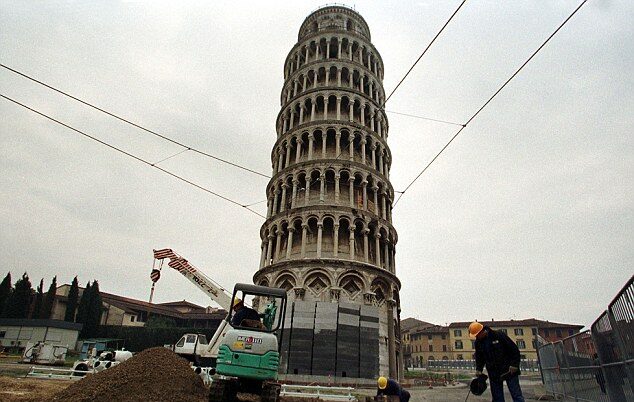In 2001, the Leaning Tower of Pisa, one of the world’s most recognized architectural anomalies, reopened to the public after an extensive 11-year restoration project. This $27 million endeavor was not just a remarkable feat of engineering but a testament to the enduring allure and historical significance of this iconic structure.
A Glimpse into History: The Tower’s Origins
The story of the Leaning Tower of Pisa begins in the 12th century, in the prosperous Italian city of Pisa. Intended to be a freestanding bell tower for the adjacent cathedral, the construction of the tower started in 1173. However, it was during its early construction phases that the tower began to lean due to the soft ground, composed of clay, fine sand, and shells. The lean only accentuated as the construction progressed over the next two centuries, with various architects attempting to correct it.
Architectural Wonder: The Tower’s Design and Significance
Standing at about 56 meters tall, the tower is a marvel of Romanesque architecture, notable for its ornate design and white marble exterior. Despite its unintended tilt, the tower has been widely acclaimed for its beauty and its testament to medieval European engineering.
The Lean: A Blessing in Disguise
Ironically, it was the very flaw of the tower that propelled it to global fame. The lean, caused by an inadequate foundation on the soft subsoil, became the tower’s defining feature, drawing curious visitors from all over the world. It has been a subject of fascination and study for engineers and historians alike, symbolizing the blend of human error and the resilience of human ingenuity.

The Closure and Restoration: A Race Against Time
By the late 20th century, the tower’s lean had reached a critical angle, prompting fears of a total collapse. This led to its closure in 1990 and the initiation of an ambitious restoration and stabilization project. Engineers undertook a delicate process of soil extraction from underneath the foundation and added counterweights to stabilize the structure, all while meticulously ensuring that the tower’s famed lean was preserved.
Reopening and Legacy: A Renewed Symbol of Italian Heritage
The successful completion of the restoration project in 2001 marked a new chapter in the tower’s history. The reopening was celebrated as a significant achievement in cultural preservation, showcasing how modern engineering could collaborate with historical conservation.
Today, the Leaning Tower of Pisa stands not just as a popular tourist attraction but as a symbol of Italian heritage and architectural resilience. Its history, from its initial construction to its recent stabilization, reflects the interplay of human ambition, the forces of nature, and the advancements in technology.
The tower’s legacy goes beyond its physical structure; it serves as a reminder of the importance of preserving our cultural landmarks. It teaches us that while embracing the new, we must also protect and cherish the old, for they are the tangible connections to our past.
As we look at the Leaning Tower of Pisa today, leaning majestically as it has for centuries, we are reminded of the incredible journey it has endured – a journey of beauty, challenge, and triumphant preservation.







Christine Fearing
December 16, 2023 / at 7:09 pm
I thoroughly enjoyed the article about the Leaning Tower of Pisa. I visited the monument in the 1980’s (during its tilt stage). Today, I am anxious to revisit the Tower in its reformed state.
Thank you for the article,